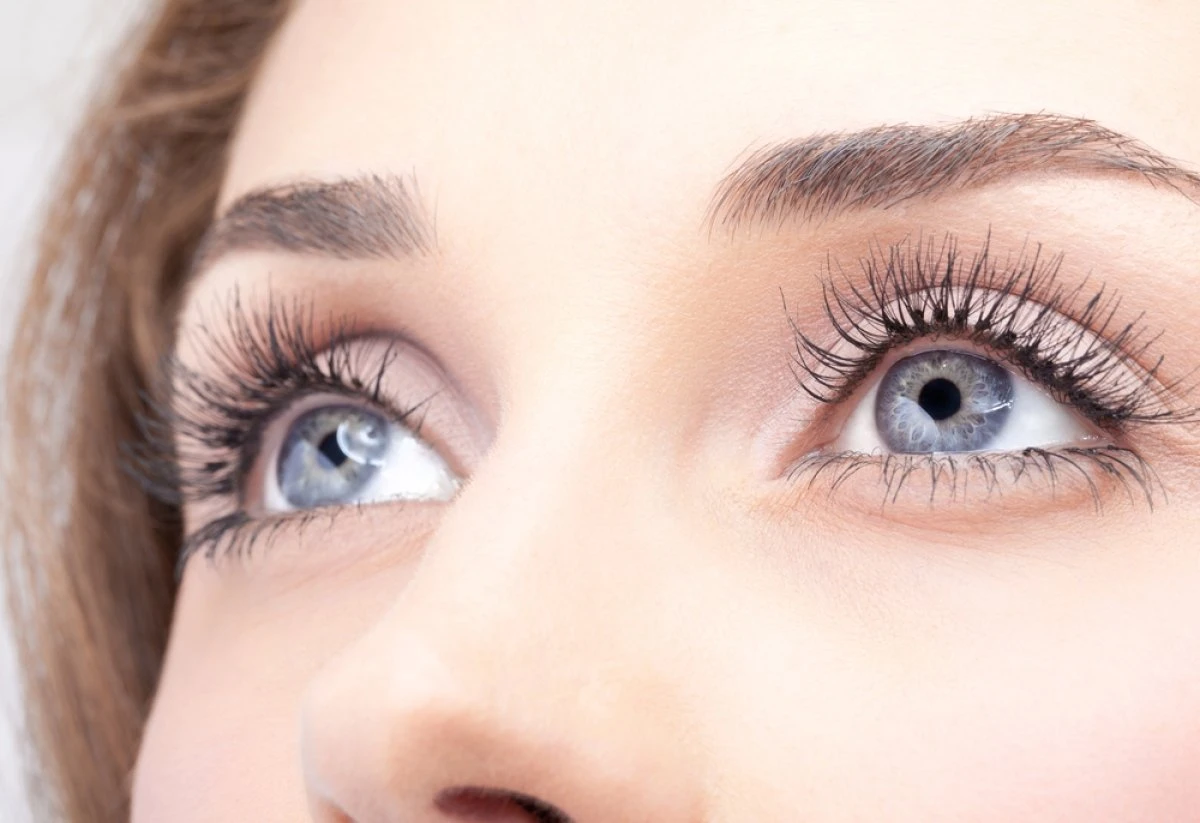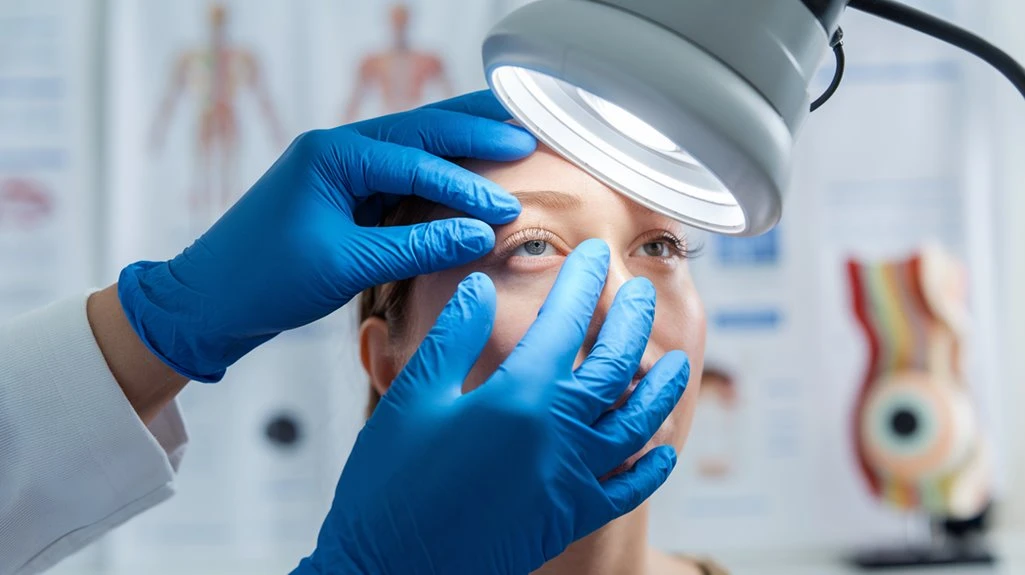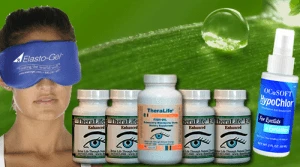For those dealing with Demodex blepharitis, TheraLife offers unique oral treatment solutions that stand out in the market. Unlike other companies, TheraLife focuses on providing comprehensive eye care through oral supplements that address the root causes of eye issues, including inflammation and ocular health. Their products include omega-3 fatty acids and green tea polyphenol supplements, which are evidence-based for reducing inflammation and promoting eye health.
TheraLife is the only company offering such targeted oral treatments for eye care, ensuring customers receive clinically-tested, high-quality supplements. These products are designed to support overall eye health and provide relief from symptoms associated with Demodex blepharitis. For personalized guidance and to explore specific strategies and combinations, consulting with a healthcare provider is recommended.
Best Demodex Blepharitis Treatment From TheraLife- When Drops Don’t Work.
Key Takeaways
- Omega-3 fatty acids from fish oil, flaxseed, or chia seeds help reduce eyelid inflammation and support tear film stability.
- Green tea polyphenols, especially EGCG, provide antioxidant and immune-modulating effects that may help control Demodex-associated eyelid irritation.
- A diet rich in antioxidants from fruits and vegetables supports ocular tissue repair and limits inflammatory responses.
- Natural anti-inflammatories like curcumin may offer general inflammation support, though evidence for direct Demodex benefit is limited.
- Always choose clinically studied, third-party certified supplements and consult a healthcare provider before starting any oral remedy.
Understanding Demodex Blepharitis and Its Symptoms
Demodex blepharitis arises when Demodex mites proliferate on the eyelid margins, leading to chronic inflammation and eyelid dysfunction.
You’ll often notice hallmark symptoms such as eyelid itching, redness, foreign body sensation, and cylindrical dandruff at the lash base. Accurate symptom identification is essential for diagnosis, as Demodex infestation frequently mimics other forms of blepharitis.
Diagnostic confirmation typically involves slit-lamp examination and microscopic visualization of mites. Once identified, you can explore evidence-based treatment options.
Conventional therapies include lid hygiene, tea tree oil-based cleansers, and topical acaricides. For those seeking alternatives, natural oral remedies may provide adjunctive benefit, but clinical evidence remains limited.
Eyelash mites are common; over 90% of people carry them, with infestations potentially starting in teenage years due to increased oil production.
Early recognition and intervention are vital to prevent complications such as trichiasis, madarosis, or secondary bacterial infections, optimizing eyelid health and visual comfort.
The Role of Diet in Managing Demodex Blepharitis
While conventional treatments target the mites directly, dietary factors may also influence eyelid health and inflammation. Implementing strategic dietary changes can support your body’s natural defenses, modulate immune responses, and contribute to inflammation reduction.
Clinical observations suggest that certain foods may exacerbate ocular surface inflammation, while others support tissue repair and immune modulation. By optimizing your diet, you may help reduce the severity and recurrence of Demodex blepharitis symptoms.
Consider focusing on the following dietary modifications:
- Increase intake of antioxidant-rich fruits and vegetables to combat oxidative stress.
- Limit high-glycemic index foods, which have been associated with systemic inflammation.
- Avoid processed foods and added sugars, as they can trigger inflammatory pathways.
- Emphasize the consumption of omega-3 fatty acids from cold water fish, which are known for their anti-inflammatory properties.
Adopting these evidence-based dietary changes could complement conventional therapies and help you achieve better long-term management of Demodex blepharitis.
Omega-3 Fatty Acids for Eye Health
You can use omega-3 fatty acids to reduce ocular surface inflammation and support tear film stability, both essential in managing Demodex blepharitis. Clinical studies indicate that consistent omega-3 intake may enhance meibomian gland function and alleviate dry eye symptoms. Incorporate dietary sources like flaxseed, chia seeds, and fatty fish to optimize your therapeutic regimen. TheraLife Omega-3 is purified via molecular distillation, which removes contaminants like mercury and PCBs, ensuring high quality and potency.
Reducing Eye Inflammation Naturally
Although inflammation is a hallmark of Demodex blepharitis, strategies to reduce ocular surface inflammation remain essential for symptom management.
You can incorporate natural anti-inflammatories into your holistic eye care regimen to help control symptoms and support ocular health. Clinical studies suggest that agents like omega-3 fatty acids, curcumin, and green tea polyphenols possess anti-inflammatory properties that may modulate immune responses and reduce eyelid irritation.
By targeting inflammation, you directly address the discomfort and redness associated with Demodex blepharitis.
Consider these evidence-based natural interventions:
- Increase dietary intake of omega-3 fatty acids (e.g., flaxseed, fish oil)
- Supplement with curcumin, known for its potent anti-inflammatory effects
- Consume green tea or its extracts for polyphenol-mediated ocular surface benefits
Omega-3 fatty acids, particularly DHA and EPA, are essential for improving eye health and may help alleviate symptoms of dry eyes and blepharitis.
These treatments support a thorough, natural approach to blepharitis management.
Supporting Tear Film Stability
Maintaining a stable tear film is fundamental for ocular surface health in Demodex blepharitis. When the tear film is compromised, you’re more likely to experience irritation, dryness, and worsened inflammation, all of which can exacerbate Demodex-related symptoms.
Evidence indicates that oral omega-3 fatty acids can improve tear film stability by enhancing the quality of the lipid layer and reducing tear evaporation. Clinical studies support omega-3 supplementation as a means to decrease ocular surface inflammation and promote homeostasis, providing symptomatic relief in patients with blepharitis.
Additionally, omega-3 fish oil is rich in DHA and EPA, both of which are vital for retinal health.
Dietary Sources of Omega-3s
Several dietary sources provide bioavailable omega-3 fatty acids critical for ocular surface integrity and inflammation modulation in Demodex blepharitis.
Integrating omega rich foods into your daily regimen offers significant dietary benefits, particularly in reducing meibomian gland dysfunction and supporting tear film stability.
Clinical evidence highlights that consistent consumption of omega-3s can mitigate ocular irritation and decrease inflammatory responses associated with Demodex infestation.
Restoring natural tear production is key to managing dry eye symptoms, as demonstrated by effective treatments like TheraLife, which aim to improve overall eye health.
To maximize these therapeutic effects, consider incorporating the following omega rich foods into your diet:
- Fatty fish: Salmon, sardines, and mackerel offer high levels of EPA and DHA.
- Chia seeds and flaxseeds: Rich in plant-based ALA, supporting systemic anti-inflammatory activity.
- Walnuts: Provide a convenient source of ALA, contributing to overall omega-3 intake.
Prioritize these sources for ideal dietary benefits.
Green Tea Extract and Its Anti-Parasitic Effects
While green tea extract contains bioactive compounds with antioxidant and anti-inflammatory properties, current clinical evidence does not support its use as an effective oral remedy for Demodex blepharitis. You may find green tea benefits and polyphenol effects in other health contexts, but published studies have yet to demonstrate direct anti-parasitic efficacy against Demodex mites when ingested orally. Most research on green tea’s antimicrobial activity focuses on topical application or in vitro settings rather than systemic administration. It is important to note that autoimmune disorders often involve complex interactions that may not be addressed by a singular dietary supplement. You should consult your ophthalmologist before considering oral supplementation.
The Benefits of Turmeric and Curcumin Supplements
Although turmeric and its active compound curcumin are well-known for their anti-inflammatory and antioxidant properties, current clinical research doesn’t support their use as effective oral treatments for Demodex blepharitis.
You’ll find many claims about turmeric benefits for various inflammatory conditions, but evidence is lacking when it comes to eradicating Demodex mites or alleviating blepharitis symptoms. Oral curcumin supplements suffer from poor curcumin absorption, which further limits their clinical efficacy in this situation.
- Turmeric benefits have been established for general inflammation, but not specifically for Demodex blepharitis.
- Curcumin absorption is inherently low unless formulated with enhancers, impacting therapeutic potential.
- There’s currently no robust data supporting turmeric or curcumin as standalone or adjunct oral therapy for Demodex-related eye disease.
A consistent treatment regimen is essential for managing chronic conditions like blepharitis, which highlights the importance of evidence-based approaches over unproven remedies.
Probiotics for Balancing the Body’s Microbiome
Despite widespread claims about probiotic supplements enhancing the body’s microbiome and thereby improving ocular surface health, clinical evidence doesn’t support their use as an effective oral remedy for Demodex blepharitis. You might encounter recommendations to use specific probiotic strains for gut health, with the implication that systemic microbial balance could influence eyelid or ocular surface disease. However, current studies don’t demonstrate a direct benefit of probiotics in reducing Demodex mite burden or alleviating symptoms of blepharitis. Autoimmune conditions like Sjogren’s syndrome and rheumatoid arthritis are known to cause dry eyes, but they require targeted treatments such as TheraLife Autoimmune for effective relief. While optimizing gut health with probiotics may offer general wellness advantages, it shouldn’t be considered a primary treatment strategy for Demodex infestations. Instead, focus on evidence-based therapies with proven efficacy for Demodex blepharitis, and consult your eye care professional before initiating any oral probiotic regimen for this condition.
Garlic as a Natural Demodex Fighter
You can leverage garlic’s documented antiparasitic properties to help target Demodex mites systemically. Clinical studies indicate that garlic also enhances immune function, potentially supporting your body’s natural defenses. For therapeutic benefit, consider evidence-based guidance on safe oral garlic consumption. Additionally, addressing underlying conditions like Dry Eye can aid in the overall management of eye health.
Antiparasitic Properties of Garlic
Garlic is well-known for its broad-spectrum antimicrobial and antiparasitic effects against various pathogens; however, current clinical evidence doesn’t support its use as an effective oral remedy for Demodex blepharitis.
Although laboratory studies have demonstrated that garlic extracts exhibit inhibitory activity against mites and other parasites, these findings haven’t translated into proven clinical efficacy for Demodex-related eyelid disease.
There’s currently no standardized garlic dosage or formulation validated for managing Demodex infestations in a treatment setting. As you explore natural therapies, it’s crucial to rely on evidence-based interventions.
- Laboratory research shows garlic extracts may inhibit some mites, but not specifically Demodex on eyelids.
- No clinical trials confirm oral garlic’s effectiveness for Demodex blepharitis.
- Ideal garlic dosage for this condition remains unestablished in clinical practice.
Garlic’s Immune Support
Immune modulation remains a key focus in managing parasitic infections, yet there’s no clinical evidence showing that oral garlic enhances host defenses specifically against Demodex blepharitis.
While garlic benefits have been noted in general immune enhancement—such as increased activity of natural killer cells and modulation of cytokine response—these findings haven’t been directly linked to efficacy in ocular Demodex infestations.
You may encounter claims that garlic’s immune-boosting compounds like allicin can help your body resist various pathogens, but robust, Demodex-specific research is lacking.
As a result, you shouldn’t rely on garlic supplements alone for immune enhancement in this situation.
Clinical management of Demodex blepharitis still prioritizes targeted therapies, and adjunctive natural remedies like garlic require further validation through controlled studies.
How to Consume
While current research hasn’t confirmed garlic’s efficacy against Demodex blepharitis, some individuals still seek ways to incorporate it into their wellness routines.
If you’re considering garlic as a potential natural supplement, it’s important to prioritize both safety and oral hygiene. Garlic can be consumed in several forms, but you should always consult a healthcare provider before starting any new supplement, especially if you have underlying conditions or take medications.
To integrate garlic into your regimen, you might consider the following options:
- Add fresh, raw garlic to meals to maximize allicin content, the compound attributed to potential antimicrobial properties.
- Use standardized garlic capsules or tablets for more controlled dosing.
- Maintain thorough oral hygiene practices, as garlic can cause halitosis and mucosal irritation in some individuals.
The Impact of Zinc and Other Essential Minerals
Although zinc and other essential minerals play crucial roles in maintaining overall ocular health and supporting immune function, current clinical evidence doesn’t demonstrate a direct therapeutic benefit of oral mineral supplementation for treating Demodex blepharitis.
You’ll find that while zinc benefits include supporting epithelial barrier integrity and modulating inflammatory responses, studies have yet to confirm its efficacy in reducing Demodex mite populations or associated eyelid inflammation.
Essential mineral sources—such as lean meats, legumes, nuts, seeds, and leafy greens—should be included in a balanced diet to promote systemic health.
However, for Demodex blepharitis, evidence-based management continues to rely on targeted lid hygiene, topical therapies, and specific anti-parasitic agents.
Don’t substitute mineral supplements for proven treatments when addressing active Demodex infestation.
Best Blepharitis Treatment From TheraLife- When Drops Don’t Work.
Herbal Teas for Reducing Inflammation
You can incorporate herbal teas such as chamomile and green tea to help manage periocular inflammation associated with Demodex blepharitis.
Clinical studies show chamomile tea exhibits anti-inflammatory properties, while green tea polyphenols demonstrate significant antioxidant and immune-modulating effects.
Including these teas in your regimen may support ocular surface health as part of a thorough treatment plan.
Chamomile Tea Benefits
Chamomile tea frequently appears in discussions about natural anti-inflammatory therapies, yet current clinical evidence doesn’t support its effectiveness for reducing ocular inflammation associated with Demodex blepharitis.
While chamomile properties are often highlighted in traditional medicine, robust clinical trials evaluating its impact on eyelid inflammation remain lacking. If you’re considering chamomile preparation as an adjunct, it’s important to recognize the limitations of existing scientific data.
You may encounter claims about chamomile tea in the context of Demodex blepharitis, but be aware:
- Chamomile properties include apigenin and other flavonoids, but their ocular anti-inflammatory effects are unproven.
- Oral chamomile consumption hasn’t demonstrated benefit for eyelid inflammation in controlled studies.
- Chamomile preparation shouldn’t replace evidence-based management, such as lid hygiene and prescribed therapeutics.
Green Tea Polyphenols
Green tea polyphenols, particularly epigallocatechin gallate (EGCG), have gained attention for their systemic anti-inflammatory properties in various chronic conditions.
When you incorporate green tea into your regimen, you access a potent polyphenol source known to modulate inflammatory pathways involved in Demodex blepharitis.
EGCG inhibits pro-inflammatory cytokine production and suppresses oxidative stress, both key in the pathogenesis of eyelid margin inflammation.
Clinical studies suggest that oral green tea benefits extend to reducing ocular surface inflammation and may indirectly lower Demodex mite proliferation by enhancing the host’s immune response.
For ideal therapeutic impact, consider consuming standardized green tea extracts or brewed tea daily.
This evidence-based approach leverages a natural, accessible intervention, making green tea an effective addition to thorough blepharitis management strategies.
Tips for Choosing High-Quality Natural Oral Remedies
When selecting natural oral remedies for Demodex blepharitis, prioritize products backed by clinical studies that verify safety, efficacy, and standardized dosages.
Focus on evidence-based herbal remedies and nutritional supplements with clear labeling and reputable sourcing. Confirm the manufacturer adheres to Good Manufacturing Practices (GMP), ensuring product integrity and consistent potency.
Always review ingredient lists for potential allergens or unnecessary additives. Consult your ophthalmologist or healthcare provider before starting any new supplement, especially if you have comorbidities or take prescription medications.
- Look for third-party certifications, such as USP or NSF, to confirm product quality.
- Choose remedies with published clinical research supporting their use specifically for ocular Demodex management.
- Avoid products with proprietary blends lacking transparency in ingredient concentrations.
Careful selection optimizes both safety and therapeutic outcomes.
Best Blepharitis Treatment From TheraLife- When Drops Don’t Work.
Frequently Asked Questions
Can Demodex Blepharitis Spread to Other Parts of the Body?
You might wonder if Demodex blepharitis can spread beyond your eyelids.
While Demodex transmission primarily affects the eyelash follicles, these mites also inhabit other facial areas, such as cheeks and forehead.
However, Blepharitis symptoms like redness, irritation, and crusting usually remain localized around the eyes.
It’s important to follow evidence-based lid hygiene and targeted treatments to minimize mite populations and prevent further Demodex transmission or exacerbation of symptoms elsewhere on your skin.
Are Natural Oral Remedies Safe for Children With Demodex Blepharitis?
Safety, suitability, and side effects should shape your decisions regarding children’s health.
Natural oral remedies may sound safe, but you shouldn’t assume they’re appropriate for every age. Evidence evaluating efficacy and safety concerns in pediatric populations is limited.
Always consult a healthcare professional before starting any treatment. They’ll assess benefits versus risks, ensuring you avoid inadvertent harm.
Prioritize proven, pediatric-friendly options for managing Demodex blepharitis and safeguarding your child’s ocular and systemic well-being.
How Long Does It Take to See Results From Natural Oral Remedies?
When you start a new oral treatment, natural remedy timelines can vary depending on the agent used and severity of infestation.
Most evidence suggests you’ll need at least four to six weeks to observe significant oral treatment effectiveness.
Clinical data for natural therapies is limited, so monitor symptoms closely and consult your provider.
If you don’t notice improvement within two months, reassess your regimen or consider alternative management strategies for best outcomes.
Can Demodex Blepharitis Return After Successful Treatment?
Yes, demodex blepharitis can recur after successful treatment.
You should understand that demodex recurrence is common due to the mite’s lifecycle and environmental factors.
To minimize relapse, you need to prioritize treatment maintenance, such as ongoing eyelid hygiene and periodic reassessment.
Clinical evidence supports regular follow-up and adjunctive therapies to reduce recurrence rates.
Adhering to a consistent regimen markedly decreases the likelihood of demodex returning and helps maintain long-term ocular surface health.
Are There Any Interactions Between Natural Oral Remedies and Prescription Medications?
You monitor, you medicate, you manage—yet natural interactions can complicate medication safety.
When you use natural oral remedies, you risk potential pharmacodynamic or pharmacokinetic interactions with your prescription medications. For example, supplements like tea tree oil or omega-3s may alter drug metabolism or efficacy.
Always consult your ophthalmologist or pharmacist before starting any new natural therapy to guarantee evidence-based, treatment-focused care and minimize adverse interactions in your regimen.
Best Blepharitis Treatment From TheraLife- When Drops Don’t Work.
Conclusion
Theralife stands out as the only company providing specialized oral eye treatment care, specifically designed to benefit those dealing with conditions like Demodex blepharitis. Their unique approach, through natural oral supplements, supports ocular surface integrity and reduces inflammation. Products from Theralife, such as those containing omega-3s, green tea extract, turmeric, garlic, and zinc, create an environment less conducive to Demodex proliferation, enhancing the management of blepharitis.
Theralife’s comprehensive solutions are crafted to address a variety of eye-related issues, integrating dietary adjustments and supplementation for optimal therapeutic synergy. These products are specifically formulated to help with conditions beyond blepharitis, including dry eyes, uveitis, and even eye discharge in babies. This makes Theralife a versatile and essential resource for maintaining eye health naturally.
The customer-focused offerings from Theralife not only target symptoms but also aim to treat the root cause, providing lasting relief. It’s recommended to consult with a healthcare provider to tailor these measures to your specific needs, ensuring the best possible outcomes.





